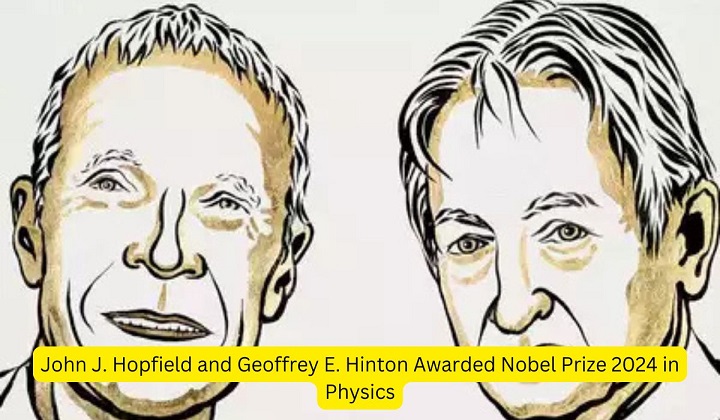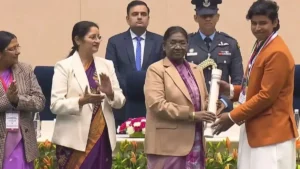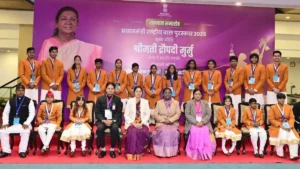The Royal Swedish Academy of Sciences has awarded the Nobel Prize in Physics 2024 to John J. Hopfield from Princeton University, USA, and Geoffrey E. Hinton from the University of Toronto, Canada. They are being honored for their foundational discoveries and inventions that have advanced the field of machine learning, particularly through the development of artificial neural networks.
Nobel Prize 2024 in Physics – Winner’s Name
- John J. Hopfield
- Geoffrey E. Hinton
Topic : For foundational discoveries and inventions that enable machine learning with artificial neural networks
Overview
- This year’s two Nobel Laureates in Physics have used tools from physics to develop methods that are the foundation of today’s powerful machine learning. John Hopfield created an associative memory that can store and reconstruct images and other types of patterns in data.
- Geoffrey Hinton invented a method that can autonomously find properties in data, and so perform tasks such as identifying specific elements in pictures.
John Hopfield Work
- John Hopfield created an associative memory model that can store and recall patterns, such as images.
- The network is inspired by physical processes, particularly those related to atomic spin—a property that makes atoms behave like tiny magnets.
- Each node in the Hopfield network is similar to a pixel in an image. Nodes influence each other through their connections, similar to how neurons in the brain interact.
Physics of the Hopfield Network
- The network’s behavior can be explained using concepts from spin systems in physics, where energy is minimized for stable configurations.
- The network is trained by adjusting the connections between nodes, ensuring that saved patterns correspond to low-energy states.
- The goal of the network is to reduce its overall energy, which is akin to finding the most stable arrangement of atomic spins in a material.
Function and Pattern Finding
- When the Hopfield network is presented with a distorted or incomplete image, it systematically updates the values of the nodes.
- This process aims to minimize the network’s energy, leading to the retrieval of the stored image that most closely resembles the input.
- The network operates step by step, correcting the distorted input and recovering the most accurate version of the saved pattern.
Geoffrey Hinton works
Boltzmann Machine Foundations
- Geoffrey Hinton built upon Hopfield’s work to develop the Boltzmann machine, a network that can learn and recognize patterns in data.
- The Boltzmann machine uses methods from statistical physics, which deals with systems made up of numerous interacting components, to learn patterns.
Learning and Pattern Recognition
- Unlike the Hopfield network, the Boltzmann machine focuses on learning characteristic features within a dataset.
- It is trained by being fed examples that are statistically likely in the data, refining its ability to classify and recognize patterns.
Applications and Modern Machine Learning
- The Boltzmann machine can classify images, and also generate new examples that are similar to the data it was trained on.
- Hinton’s work on the Boltzmann machine has significantly contributed to the rapid development of machine learning, making it a crucial tool in today’s AI research.
Impact of the Laureates’ Work
- The work of John Hopfield and Geoffrey Hinton has revolutionized fields like artificial intelligence and machine learning by establishing foundational models for pattern recognition and data analysis.
- These neural networks are now applied in various domains, including physics, where they help in the discovery of new materials with specific properties.
- As Ellen Moons, Chair of the Nobel Committee for Physics, stated, their contributions have “already been of the greatest benefit” and continue to influence cutting-edge research in both AI and physics.
About John J. Hopfield
- Born 1933 in Chicago, IL, USA.
- PhD 1958 from Cornell University, Ithaca, NY, USA.
- Professor at Princeton University, NJ, USA.
About Geoffrey E. Hinton
- Geoffrey E. Hinton, born 1947 in London, UK.
- PhD 1978 from The University of Edinburgh, UK.
- Professor at University of Toronto, Canada.
| Summary/Static | Details |
| Why in the news? | Nobel Winner Physics 2024 |
| Nobel Prize in Physics 2024 | John J. Hopfield and Geoffrey E. Hinton |
| Awarded For | Foundational discoveries and inventions enabling machine learning with artificial neural networks |
| Key Contributions | – John Hopfield created an associative memory model for storing and recalling patterns, such as images.
– Geoffrey Hinton developed the Boltzmann machine, a model for learning and recognizing patterns in data. |
| About Nobel Prize | Established by Alfred Nobel (1895). Awarded for contributions that “confer the greatest benefit to humankind.”
The Nobel Prize in Physics is awarded annually by the Royal Swedish Academy of Sciences. |
| Prize Money | 2024 Nobel Prize value: SEK 11.0 million per full Nobel Prize. |
| Nobel Prize Categories | Physics, Chemistry, Physiology/Medicine, Literature, Peace (and Economics since 1968). |




 Rewind 2025: Prime Minister Narendra Mod...
Rewind 2025: Prime Minister Narendra Mod...
 Vaibhav Suryavanshi Receives PM Rashtriy...
Vaibhav Suryavanshi Receives PM Rashtriy...
 President of India Presents Pradhan Mant...
President of India Presents Pradhan Mant...







